Marijuana guides
Strict Regulations & Potential Changes
Published
8 months agoon
By
admin
By: Juan Sebastian Chaves Gil
In Russia, it is prohibited to possess, sell, or cultivate cannabis, and the country holds the highest number of people incarcerated for drug-related offenses in Europe on a per capita basis, primarily under Article 228. Despite this strict stance, there are signs of potential legal modifications, as the importation of cannabis for medical research is being considered. Russian legislation on cannabis prohibits both possession and consumption under Article 228 of the national Penal Code, with penalties including fines and imprisonment.
Although sentences may have been deferred since 2012 for those deemed to have drug problems, possession of more than six grams is considered a criminal offense. Authorities have often been accused of exaggerating the quantities of seized cannabis to justify arrests.
Penalties may include significant fines, forced labor, corrective labor, and deprivation of liberty. However, there is the possibility of avoiding punishment if the individual cooperates with authorities in combating drug trafficking.
Although possession and consumption of cannabis are common in Russia, the legal consequences are severe, with a minimal acquittal rate and most convicted individuals facing long prison sentences. Despite this, the estimated number of drug users in the country is considerably high.
Cannabis Commercialization in Russia:
In Russia, the commercialization of cannabis is prohibited and constitutes a serious offense, with severe legal consequences. Individuals caught selling this substance or any other drug face prison sentences ranging from four to eight years, with possible additional restrictions on liberty for up to one year.
Penalties are even more severe for large-scale sales or involvement in a criminal network, with sentences ranging from five to twelve years, usually accompanied by considerable fines, which could reach 500,000 rubles or the equivalent of three years’ salary.
In cases of distribution on a very large scale, in collaboration with criminal organizations, or if sales are conducted through an official position, sentences can be even longer, up to twenty years in prison. Additionally, there is the possibility of losing the right to certain jobs or activities, along with fines of up to one million rubles or five years’ salary.
Despite these punitive measures, drug trafficking remains a challenge in Russia, with estimates suggesting significant annual profits for the drug trafficking industry. Lack of employment sometimes forces Russian citizens to resort to drug selling as a means of livelihood, as mentioned by a trafficker in an interview with the Moscow Times.
Regarding the cultivation of cannabis, it is also prohibited in Russia, with penalties similar to those for sales. Even those cultivating small amounts of plants face the risk of being sentenced to long prison terms.
However, in June 2019, a bill was introduced that could relax this regulation by allowing the cultivation of cannabis for pharmaceutical purposes, but it is still pending approval by the Federation Council and the signature of President Vladimir Putin to take effect. If approved, state-owned companies could obtain special licenses for the sale of cannabis for medicinal purposes.
You may like
-


Top 5 Delta 9 Edibles That Actually Work and Taste Delicious
-


The Latest in DEA Shenanigans? The Federal Agency Punts Marijuana Hearings into 2025
-


Dutch police find gnome made of MDMA during drug bust
-


Rejected applicants sue Minnesota over marijuana social equity licensing process
-


4 Ways Marijuana Can Help You Have A Better Thanksgiving
-


Can Big Alcohol Help The Cannabis Industry
autoflower seeds
How To Germinate Cannabis Seeds In Different Mediums
Published
2 months agoon
October 7, 2024By
admin
Germinating is the beginning of life for your cannabis plant, and it is essential to understand how it works.
This guide will discuss the different ways of germinating your marijuana seeds and some strategies to help you achieve the best results.
Why You Need to Germinate Cannabis Seeds Before Planting
Many different plants can germinate in the ground. However, cannabis seedlings can be fragile. Because of this, weed seeds should be germinated separately before planting. Immediately after the seeds have sprouted, they should be planted in a hydroponic setup, a soilless medium, or the soil.
During the planting process, you should ensure that the seeds are 2.5 cm (1 Inch) deep in whichever medium you choose and covered lightly.
After planting, you should wait one week for the seedling to start emerging from the soil. If the seed poked through the soil by the tenth day, it likely didn’t survive.
When to Germinate Your Cannabis Seeds
We recommend that you germinate your cannabis seeds when the hours of sunlight are long enough to allow for healthy growth.
In short, we recommend germinating your seeds in the spring when it is getting warmer and when the sun won’t disappear for long periods. You don’t need to follow a fixed calendar, although it can help. Instead, you can look outside your house and see when other plants are starting to sprout. Just make sure that good growing weather will be present for some time. Your plants should be getting about 12 hours of sunlight each day. You can help with this by making sure they have southern exposure.
This means ensuring your plants have access to the sky facing south. Now that we have a solid foundation of where to start let’s learn how to germinate your cannabis seeds.
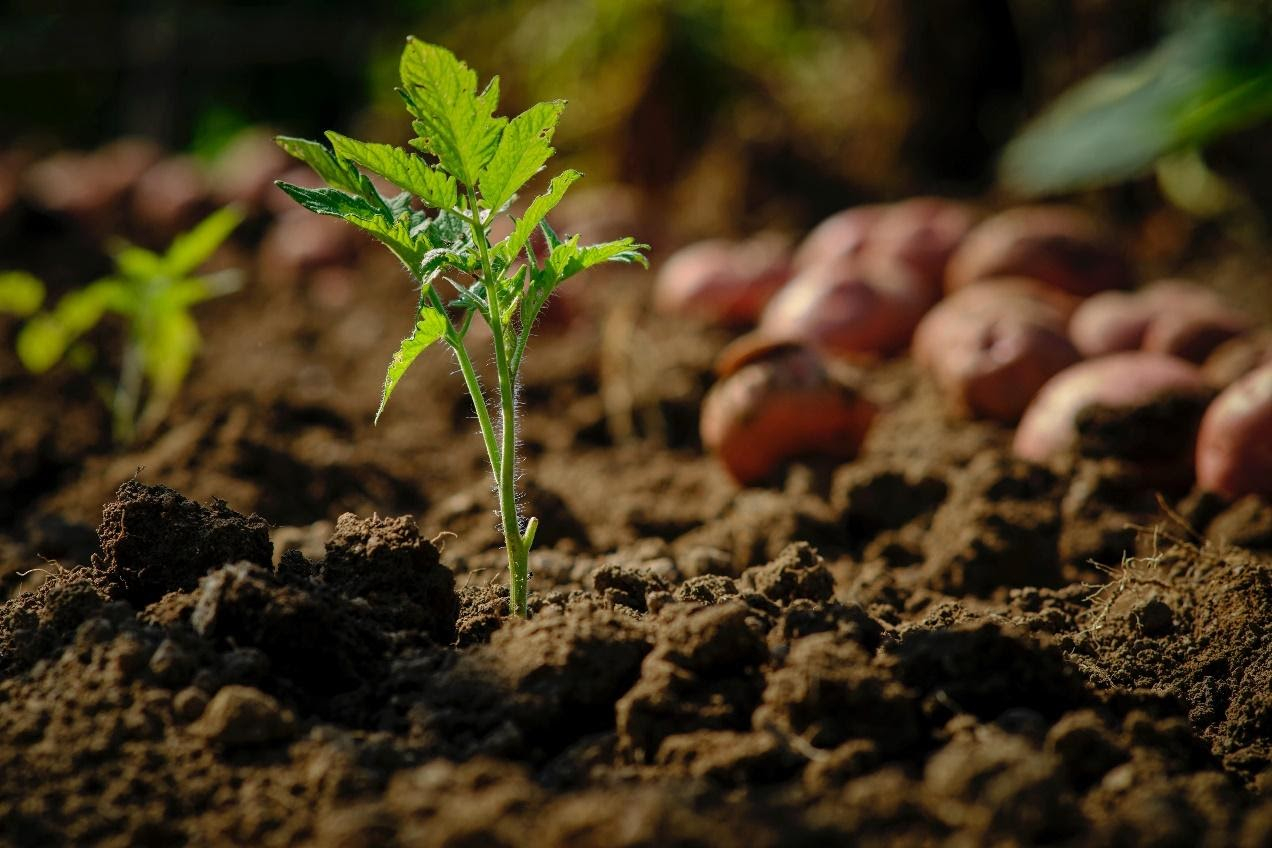
How to Germinate Your Cannabis Seeds
Before we highlight the different methods of germinating marijuana, we need to understand what conditions the seeds need to germinate. The conditions include the following:
· Moisture – You need to ensure that the seeds are moist. You can soak cannabis seeds for between 20-30 hours. Do not oversoak them.
· Provide Peace– Don’t disturb the seeds; wait for the taproot to show up.
· Warmth– To assist with germination, keep the seeds warm. Make sure the environment is not too hot. Seeds can germinate in cooler temperatures, but the process takes a long time when it’s cold. You want to shoot between 20 to 25°C (68 to 77°F).
· Be Gentle– Be careful when taking care of the seeds; treat them gently as you move them. If possible, avoid touching the white root; this is the taproot and is fragile. It can easily snap off.
· Plant with the Pointed End Up– Make sure the pointed end is facing up when planting the seeds. This will ensure that the seedling does not waste energy trying to reorient itself.
· Plant About a Knuckle Deep – Don’t put the seeds too deep in the soil. You can place the seed about an inch under the soil’s surface.
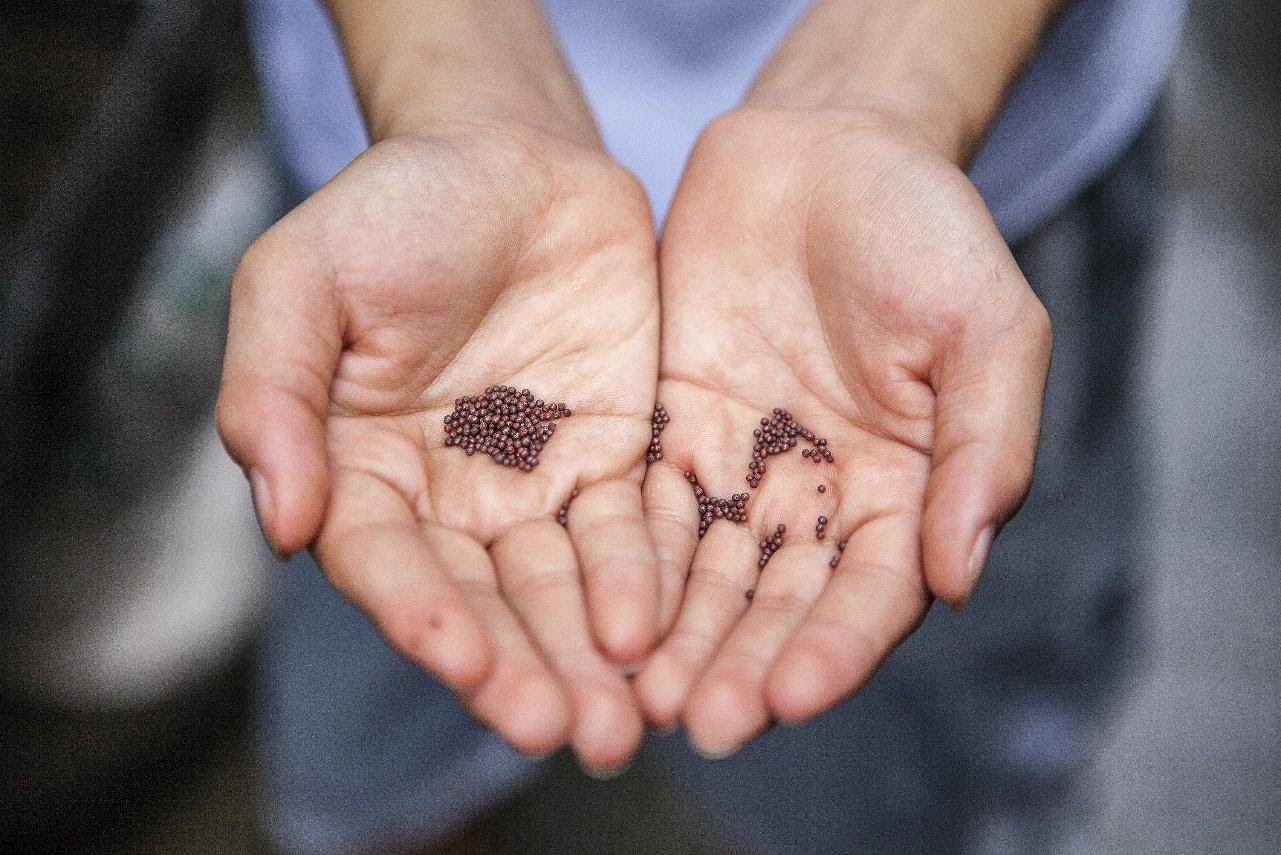
Different Methods of Germinating Cannabis Seeds
The best germination method depends on the choice of the cultivator. Below are some of the common ways to germinate your cannabis seeds.
Germinating Cannabis Seeds in the Soil
Perhaps the easiest way to germinate cannabis seeds. The soil acts as a protective barrier for the seeds. It is also good at retaining moisture. What steps should you take to germinate seeds in soil?
Step 1: Ensure You Use the Correct Soil Type – This is the first step. The soil should either be gently fertilized or a seed starter with a pH level of 6.
The soil should also contain enough nutrients and the right acidity to strengthen the young plants during the first two weeks. After that, refrain from adding more nutrients to the soil unless there is an absolute need. After that, you can cause your plant to go into the nutrient lock.
Step 2: Place the Soil in a Container and Use a Pencil to Create a Small Hole – Once the soil is in the pot, you can use a pencil to create a hole that is half an inch to an inch deep. Once the seed is in the soil, bury it in the soil. After this stage, please do not touch the seed because it is very fragile.
Step 3: Water the Soil – Carefully water the soil with a spray bottle and place your pots under a fluorescent lamp. Keep your seeds away from a window. The temperature swings that happen at a window can interfere with germination. You must ensure the temperature range is between 20 to 25°C (68 to 77°F).
Ensure that you monitor the soil daily to ensure that it is moist. After 4 to 7 days, small stems should be sprouting through the soil.
Once the seedling grows to 5 to 10 cm (2 to 4 inches) height, you can now transplant the cannabis to a larger pot with more room for the roots to spread out. This indicates that you have successfully germinated the seeds into young plants.
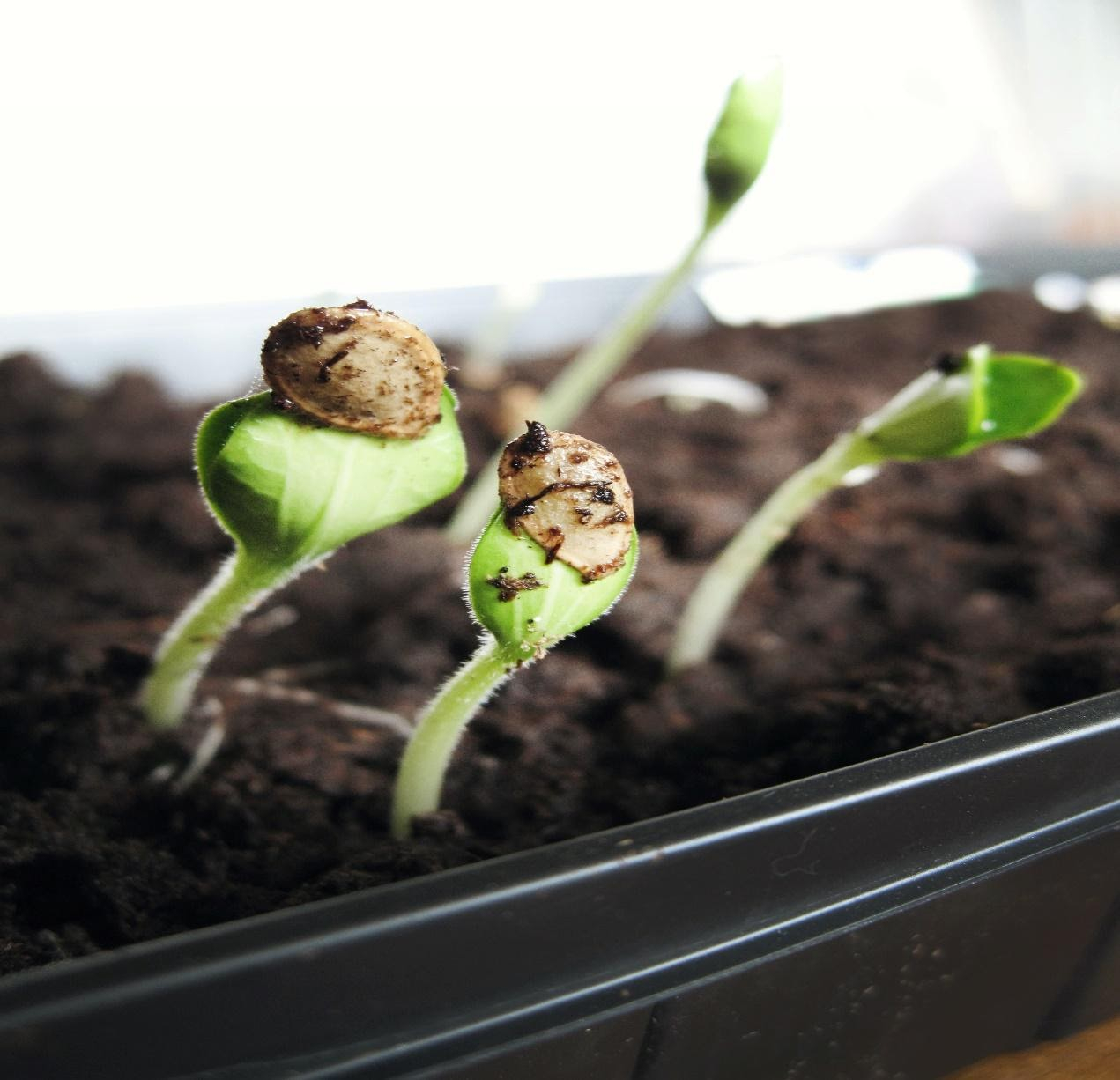
Germinating Cannabis Seeds in Water
Germinating cannabis seeds in water is popular because it is faster. All you need to do is place your seeds in water and make adjustments as necessary.
As we stated earlier, germinating seeds require a balanced and ideal growing condition. For example, many water germinations require only 24 to 48 hours to ensure that the stems pop out of the seeds. However, some seeds can be soaked for up to a week.
Water germination can be fast because the seeds have all the water they need readily available. This allows the shell to be softened and to crack easily.
What do you need to do to germinate seeds in water?
Step 1: Fill a Glass with Tap Water and Leave It to Come to Room Temperature – Once you fill a glass with tap water, you should leave it in a warm room until it attains a temperature of at least 65 degrees Fahrenheit.
Step 2: Add Seeds to the Glass – Add 2 or 3 seeds to the glass and allow them to settle for some time. Then watch the glass for any changes. You can change the water to freshwater after every two days, but always make sure that it is at room temperature.
The seeds may start sprouting after two days, though some old seeds may take a week to sprout.
Step 3: Remove the Seeds from the Water – Once the seeds have sprouted, remove them from the glass and place them in the soil.
The only disadvantage with water germination is that you must be very careful when moving the sprouted seeds. This process is very delicate since the seeds are fragile. If you harm the seeds, you can kill the plant.
Germinating Seeds on Paper Towels
Germinating marijuana seeds on paper towels is a common way to sprout cannabis seeds. In some cases, the grower will use a cotton pad instead. The methods for germination using paper towels and cotton padding are very similar.
Step 1: Lay the Paper Towels on a Flat Surface – To germinate seeds using paper towels, you should lay paper towels on a countertop, then place some seeds on them. Next, cover the seeds using another towel.
Step 2: Moisten the Towels – Use a spray bottle to moisten the towels. Place the paper towels and seeds on a plate or in a bowl. Then cover the seeds with a face-down bowl or plate. Alternatively, you can place them in a plastic bag to ensure they are secure.
Step 3: Maintain the Temperature – Ensure room temperature is between 20 to 25°C (68 to 77°F). You will want to maintain this temperature. Also, you should wrap the seeds and place them in a dark place. You will want to keep the seeds away from direct wind and sunlight. Within 2-5 days, the seeds should start to show tiny roots. You can plant them when they reach about 5 millimeters (0.2 Inch) in length.
The paper towel method has some risks. This is because the seedlings might be destroyed during the unwrapping and potting stage. Also, the roots can become entangled in the towel and the roots of other seeds. So make sure you relocate the seeds before their roots get too long.
You can use your hands or some tweezers to move the seeds and place them in your medium of choice.
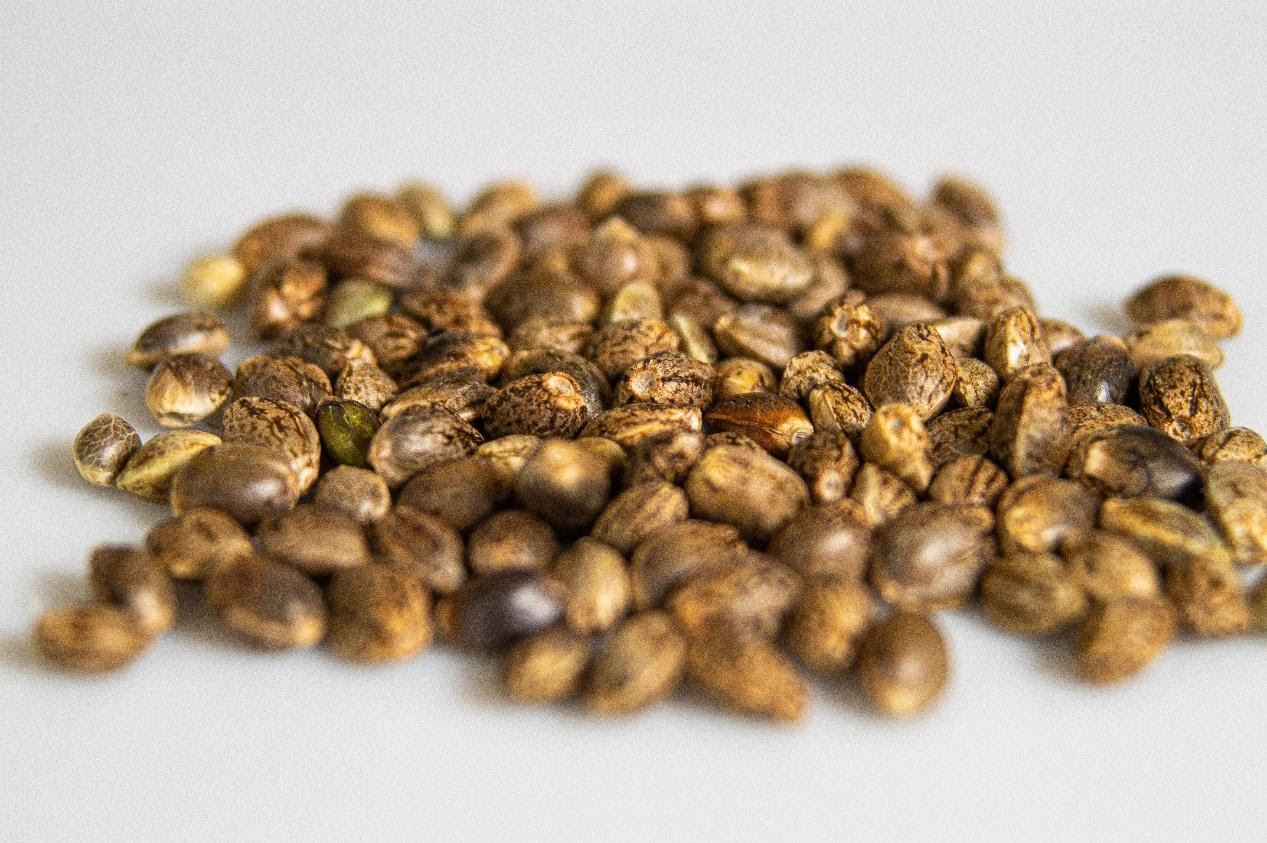
Other Popular Germination Methods
The abovementioned methods are some of the most popular ways of germinating marijuana seeds. However, they are not the only ways. For example, you can always use starter plugs or cubes.
These methods are straightforward. All you have to do is to put a seed into or onto the growing medium. Once you do this, add some water. Then you need to wait. After that, the seeds should begin to germinate. Just keep an eye that they don’t dry out.
These methods protect the plants from damage, mainly when transported to their final homes. However, as usual, you should exercise caution when using these methods.
Germinating Cannabis Seeds in Peat Pellets
This is a method of germinating seeds that will help to mitigate damage to the young roots. Peat pellets are made of decomposed vegetable matter. These pellets contain nutrients that the seedlings need to develop correctly. The pellets enlarge when you add water to them, forming a nutrient-rich container.
The peat pellets are optimized with a pH of 5.5. Therefore, you shouldn’t need to worry about any adjustments. However, remember to soak the pellets in warm water to prepare them for the seeds.
Once the roots appear, move the whole pellet into the medium, where it will continue growing. This method is not recommended for hydroponic setups. However, peat pellets are suitable for germination and can be used by beginners. They can also be used in cloning.
Planting the Germinated Cannabis Seeds
After the seeds have sprouted, they should be planted in the most suitable medium.
If you use a germination process that requires moving the sprouts, do so with a lot of care since the roots are very fragile. You don’t want to touch the root, or you can break it. The root may sustain this, but it can seriously hamper your plant’s growth. It can also send the plant into shock, which it may never recover from. It should also be placed half an inch to an inch deep in the growing medium. After positioning the germinated seed, cover it lightly and make sure the soil is moist. After one week, the seedling should emerge through the soil.
Some seeds emerge in a day or two, while others can take up to 10 days. If the waiting period exceeds ten days, your seed may not have survived.
If your seed is planted upside down, don’t panic, nature has a way of working things out. As long as you have not crowded the seedling, it should be able to correct itself. Give it some time and space and allow it to do this.
Cannabis Seeds versus Clones
For typical home growers, it is easier to obtain cannabis seeds than clones. Also, growing seeds produce more vigorous plants acclimated to the climate they are growing in.
Marijuana plants grown from seed are usually stronger than plants grown from clones. This is because they develop strong taproots. In cooler climates, you can plant your seeds directly in your garden. After the last frost, you will want to do this in mid to late spring.
It is better to germinate your seeds indoors if you grow them outside. This will allow the seeds a more extended germination period and also protect them from the worst of the early spring weather. Moreover, growing the plant indoors will enable the seedling access to plenty of light (primarily if you use a grow lamp). Then, transplant them outside or into an indoor pot when mature enough.
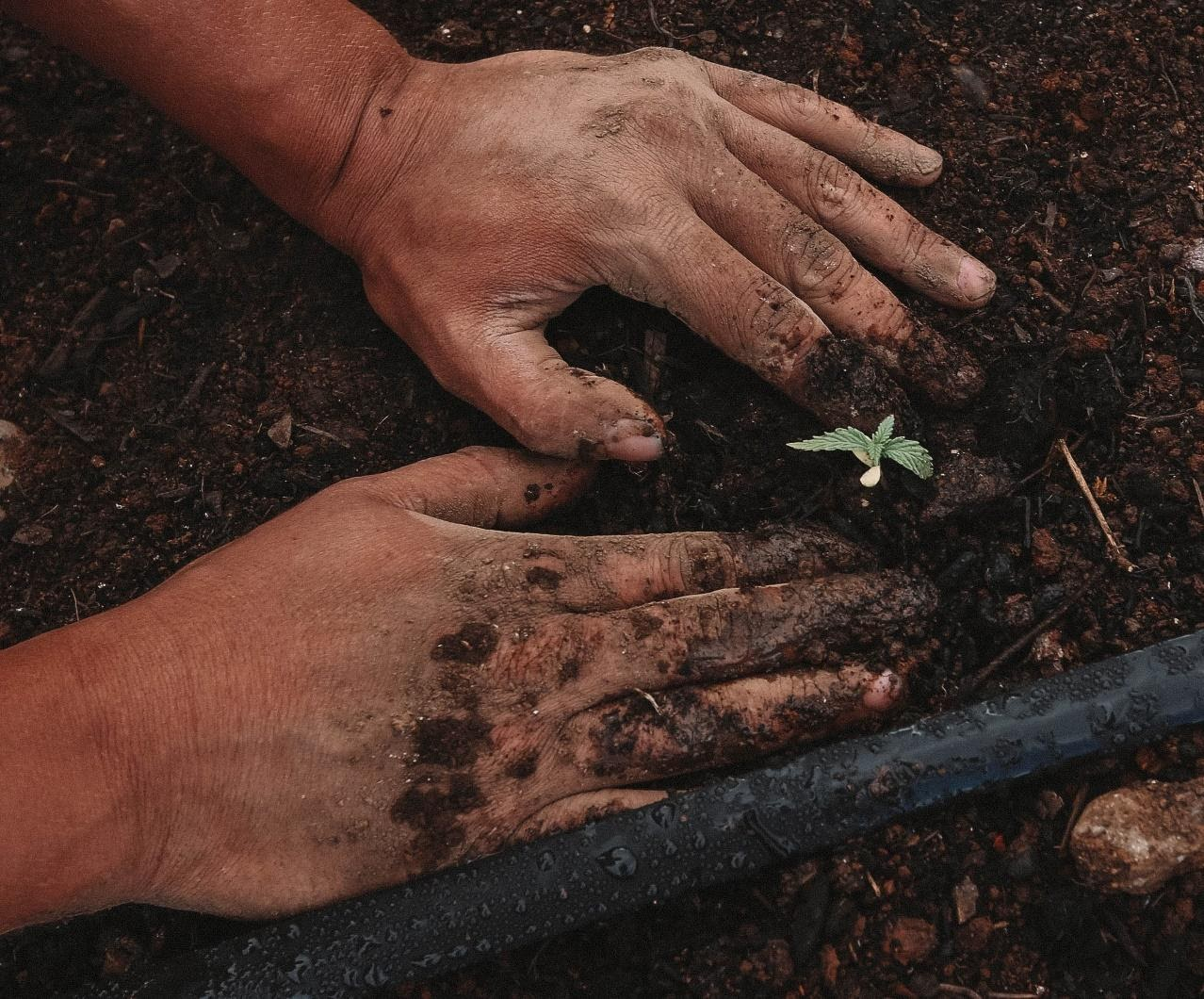
Is Lighting Important for Cannabis Germination?
Just like water, lighting is an essential requirement for germination. Light enables the plant to survive. In addition, it allows for the creation of sugars during photosynthesis. The plant will use these sugars to feed itself as it grows.
Light is also essential to the young plant. It also provides much-needed warmth. The plant will require warmth to help break through the shell and not die from the cold. Fluorescent bulbs with a color temperature of 6500K and a T5 output will help provide the seeds with the correct light.
Fluorescent bulbs are recommended because they take up very little power and don’t produce too much heat. You can adjust the position of the lights so that they are very close to the plants without causing them to suffer any damage. As soon as the first leaves emerge, you will need to ensure that your plants are receiving light.
You can use incandescent bulbs also. They will generate heat. You cannot use incandescent lights to provide the light necessary to grow your plants. However, they can be used to assist in germination.
You can use garden heating mats as an alternative to light as a heat source. These pads heat the seeds from underneath the container you are germinating in. Remember that once the plants start to grow, you will need an alternative heating method. Also, these pads will not produce enough warmth for larger plants.
Keep the soil at around 21 to 22°C (69 to 71°F). Seeds need a specific temperature range to germinate. If the temperature is too cold, they won’t germinate. Likewise, if the temperature is too hot, they won’t germinate.
It is better to have humid air when germinating seeds. Drier air is not that good for your seeds. Also, if the temperature in your germination growth starts to get too high, move the setup away from the lights. If it is too cold, move it towards the lights.
Final Thoughts
Germination is considered one of the most critical stages of cultivating cannabis. You will need to be careful with this stage. We have gone over some germination strategies that will help you achieve the best results possible. We think what works for you is the best way to do something. If you are like me, you prefer to do things most simply and naturally possible. Not just because it is easy but also because it most closely emulates natural growth. But something else may appeal to you. So get out there and see what works for you.
autoflower seeds
How To Germinate Cannabis Seeds In Different Mediums
Published
2 months agoon
October 6, 2024By
admin
Germinating is the beginning of life for your cannabis plant, and it is essential to understand how it works.
This guide will discuss the different ways of germinating your marijuana seeds and some strategies to help you achieve the best results.
Why You Need to Germinate Cannabis Seeds Before Planting
Many different plants can germinate in the ground. However, cannabis seedlings can be fragile. Because of this, weed seeds should be germinated separately before planting. Immediately after the seeds have sprouted, they should be planted in a hydroponic setup, a soilless medium, or the soil.
During the planting process, you should ensure that the seeds are 2.5 cm (1 Inch) deep in whichever medium you choose and covered lightly.
After planting, you should wait one week for the seedling to start emerging from the soil. If the seed poked through the soil by the tenth day, it likely didn’t survive.
When to Germinate Your Cannabis Seeds
We recommend that you germinate your cannabis seeds when the hours of sunlight are long enough to allow for healthy growth.
In short, we recommend germinating your seeds in the spring when it is getting warmer and when the sun won’t disappear for long periods. You don’t need to follow a fixed calendar, although it can help. Instead, you can look outside your house and see when other plants are starting to sprout. Just make sure that good growing weather will be present for some time. Your plants should be getting about 12 hours of sunlight each day. You can help with this by making sure they have southern exposure.
This means ensuring your plants have access to the sky facing south. Now that we have a solid foundation of where to start let’s learn how to germinate your cannabis seeds.

How to Germinate Your Cannabis Seeds
Before we highlight the different methods of germinating marijuana, we need to understand what conditions the seeds need to germinate. The conditions include the following:
· Moisture – You need to ensure that the seeds are moist. You can soak cannabis seeds for between 20-30 hours. Do not oversoak them.
· Provide Peace– Don’t disturb the seeds; wait for the taproot to show up.
· Warmth– To assist with germination, keep the seeds warm. Make sure the environment is not too hot. Seeds can germinate in cooler temperatures, but the process takes a long time when it’s cold. You want to shoot between 20 to 25°C (68 to 77°F).
· Be Gentle– Be careful when taking care of the seeds; treat them gently as you move them. If possible, avoid touching the white root; this is the taproot and is fragile. It can easily snap off.
· Plant with the Pointed End Up– Make sure the pointed end is facing up when planting the seeds. This will ensure that the seedling does not waste energy trying to reorient itself.
· Plant About a Knuckle Deep – Don’t put the seeds too deep in the soil. You can place the seed about an inch under the soil’s surface.

Different Methods of Germinating Cannabis Seeds
The best germination method depends on the choice of the cultivator. Below are some of the common ways to germinate your cannabis seeds.
Germinating Seeds in the Soil
Perhaps the easiest way to germinate cannabis seeds. The soil acts as a protective barrier for the seeds. It is also good at retaining moisture. What steps should you take to germinate seeds in soil?
Step 1: Ensure You Use the Correct Soil Type – This is the first step. The soil should either be gently fertilized or a seed starter with a pH level of 6.
The soil should also contain enough nutrients and the right acidity to strengthen the young plants during the first two weeks. After that, refrain from adding more nutrients to the soil unless there is an absolute need. After that, you can cause your plant to go into the nutrient lock.
Step 2: Place the Soil in a Container and Use a Pencil to Create a Small Hole – Once the soil is in the pot, you can use a pencil to create a hole that is half an inch to an inch deep. Once the seed is in the soil, bury it in the soil. After this stage, please do not touch the seed because it is very fragile.
Step 3: Water the Soil – Carefully water the soil with a spray bottle and place your pots under a fluorescent lamp. Keep your seeds away from a window. The temperature swings that happen at a window can interfere with germination. You must ensure the temperature range is between 20 to 25°C (68 to 77°F).
Ensure that you monitor the soil daily to ensure that it is moist. After 4 to 7 days, small stems should be sprouting through the soil.
Once the seedling grows to 5 to 10 cm (2 to 4 inches) height, you can now transplant the cannabis to a larger pot with more room for the roots to spread out. This indicates that you have successfully germinated the seeds into young plants.

Germinating Seeds in Water
Germinating cannabis seeds in water is popular because it is faster. All you need to do is place your seeds in water and make adjustments as necessary.
As we stated earlier, germinating seeds require a balanced and ideal growing condition. For example, many water germinations require only 24 to 48 hours to ensure that the stems pop out of the seeds. However, some seeds can be soaked for up to a week.
Water germination can be fast because the seeds have all the water they need readily available. This allows the shell to be softened and to crack easily.
What do you need to do to germinate seeds in water?
Step 1: Fill a Glass with Tap Water and Leave It to Come to Room Temperature – Once you fill a glass with tap water, you should leave it in a warm room until it attains a temperature of at least 65 degrees Fahrenheit.
Step 2: Add Seeds to the Glass – Add 2 or 3 seeds to the glass and allow them to settle for some time. Then watch the glass for any changes. You can change the water to freshwater after every two days, but always make sure that it is at room temperature.
The seeds may start sprouting after two days, though some old seeds may take a week to sprout.
Step 3: Remove the Seeds from the Water – Once the seeds have sprouted, remove them from the glass and place them in the soil.
The only disadvantage with water germination is that you must be very careful when moving the sprouted seeds. This process is very delicate since the seeds are fragile. If you harm the seeds, you can kill the plant.
Germinating Seeds on Paper Towels
Germinating marijuana seeds on paper towels is a common way to sprout cannabis seeds. In some cases, the grower will use a cotton pad instead. The methods for germination using paper towels and cotton padding are very similar.
Step 1: Lay the Paper Towels on a Flat Surface – To germinate seeds using paper towels, you should lay paper towels on a countertop, then place some seeds on them. Next, cover the seeds using another towel.
Step 2: Moisten the Towels – Use a spray bottle to moisten the towels. Place the paper towels and seeds on a plate or in a bowl. Then cover the seeds with a face-down bowl or plate. Alternatively, you can place them in a plastic bag to ensure they are secure.
Step 3: Maintain the Temperature – Ensure room temperature is between 20 to 25°C (68 to 77°F). You will want to maintain this temperature. Also, you should wrap the seeds and place them in a dark place. You will want to keep the seeds away from direct wind and sunlight. Within 2-5 days, the seeds should start to show tiny roots. You can plant them when they reach about 5 millimeters (0.2 Inch) in length.
The paper towel method has some risks. This is because the seedlings might be destroyed during the unwrapping and potting stage. Also, the roots can become entangled in the towel and the roots of other seeds. So make sure you relocate the seeds before their roots get too long.
You can use your hands or some tweezers to move the seeds and place them in your medium of choice.

Other Popular Germination Methods
The abovementioned methods are some of the most popular ways of germinating marijuana seeds. However, they are not the only ways. For example, you can always use starter plugs or cubes.
These methods are straightforward. All you have to do is to put a seed into or onto the growing medium. Once you do this, add some water. Then you need to wait. After that, the seeds should begin to germinate. Just keep an eye that they don’t dry out.
These methods protect the plants from damage, mainly when transported to their final homes. However, as usual, you should exercise caution when using these methods.
Germinating Seeds in Peat Pellets
This is a method of germinating seeds that will help to mitigate damage to the young roots. Peat pellets are made of decomposed vegetable matter. These pellets contain nutrients that the seedlings need to develop correctly. The pellets enlarge when you add water to them, forming a nutrient-rich container.
The peat pellets are optimized with a pH of 5.5. Therefore, you shouldn’t need to worry about any adjustments. However, remember to soak the pellets in warm water to prepare them for the seeds.
Once the roots appear, move the whole pellet into the medium, where it will continue growing. This method is not recommended for hydroponic setups. However, peat pellets are suitable for germination and can be used by beginners. They can also be used in cloning.
Planting the Germinated Seeds
After the seeds have sprouted, they should be planted in the most suitable medium.
If you use a germination process that requires moving the sprouts, do so with a lot of care since the roots are very fragile. You don’t want to touch the root, or you can break it. The root may sustain this, but it can seriously hamper your plant’s growth. It can also send the plant into shock, which it may never recover from. It should also be placed half an inch to an inch deep in the growing medium. After positioning the germinated seed, cover it lightly and make sure the soil is moist. After one week, the seedling should emerge through the soil.
Some seeds emerge in a day or two, while others can take up to 10 days. If the waiting period exceeds ten days, your seed may not have survived.
If your seed is planted upside down, don’t panic, nature has a way of working things out. As long as you have not crowded the seedling, it should be able to correct itself. Give it some time and space and allow it to do this.
Cannabis Seeds versus Clones
For typical home growers, it is easier to obtain cannabis seeds than clones. Also, growing seeds produce more vigorous plants acclimated to the climate they are growing in.
Marijuana plants grown from seed are usually stronger than plants grown from clones. This is because they develop strong taproots. In cooler climates, you can plant your seeds directly in your garden. After the last frost, you will want to do this in mid to late spring.
It is better to germinate your seeds indoors if you grow them outside. This will allow the seeds a more extended germination period and also protect them from the worst of the early spring weather. Moreover, growing the plant indoors will enable the seedling access to plenty of light (primarily if you use a grow lamp). Then, transplant them outside or into an indoor pot when mature enough.

Is Lighting Important for Cannabis Germination?
Just like water, lighting is an essential requirement for germination. Light enables the plant to survive. In addition, it allows for the creation of sugars during photosynthesis. The plant will use these sugars to feed itself as it grows.
Light is also essential to the young plant. It also provides much-needed warmth. The plant will require warmth to help break through the shell and not die from the cold. Fluorescent bulbs with a color temperature of 6500K and a T5 output will help provide the seeds with the correct light.
Fluorescent bulbs are recommended because they take up very little power and don’t produce too much heat. You can adjust the position of the lights so that they are very close to the plants without causing them to suffer any damage. As soon as the first leaves emerge, you will need to ensure that your plants are receiving light.
You can use incandescent bulbs also. They will generate heat. You cannot use incandescent lights to provide the light necessary to grow your plants. However, they can be used to assist in germination.
You can use garden heating mats as an alternative to light as a heat source. These pads heat the seeds from underneath the container you are germinating in. Remember that once the plants start to grow, you will need an alternative heating method. Also, these pads will not produce enough warmth for larger plants.
Keep the soil at around 21 to 22°C (69 to 71°F). Seeds need a specific temperature range to germinate. If the temperature is too cold, they won’t germinate. Likewise, if the temperature is too hot, they won’t germinate.
It is better to have humid air when germinating seeds. Drier air is not that good for your seeds. Also, if the temperature in your germination growth starts to get too high, move the setup away from the lights. If it is too cold, move it towards the lights.
Final Thoughts
Germination is considered one of the most critical stages of cultivating cannabis. You will need to be careful with this stage. We have gone over some germination strategies that will help you achieve the best results possible. We think what works for you is the best way to do something. If you are like me, you prefer to do things most simply and naturally possible. Not just because it is easy but also because it most closely emulates natural growth. But something else may appeal to you. So get out there and see what works for you.
marijuana growing
Effortless Cultivation With AMS’s Autoflower Weed Seeds
Published
2 months agoon
September 21, 2024By
admin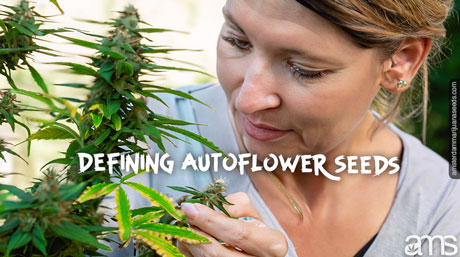
AMS’s autoflower seeds represent the pinnacle of simple growing. These seeds epitomize self-sufficiency, effortlessly guiding your weed plant from germination, through the vegetative phase, and ultimately into the flowering stage, sans any intricate intervention or manipulation of light cycles by the grower.
Our premium autoflower seeds are meticulously engineered to produce the highest yield as quickly as possible. We invite you to witness the effectiveness of our Amsterdam seeds for yourself!
Purchasing Autoflower Seeds
Autoflower seeds provide a highly adaptable crop that blends effortless management and rapid growth, making them a top choice for novices. We strongly suggest that you get acquainted with our comprehensive grow guide before embarking on your cultivation adventure. With autoflower weed seeds, growers can anticipate an impressive potential harvest, loaded with cannabinoid-rich buds.
Defining Autoflower Seeds
Autoflower seeds are a special breed of weed seeds, capable of flowering autonomously with minimal dependence on external growing factors. These seeds have been so finely tuned that they easily surpass the dependency on light cycles that feminized seeds need for a plentiful harvest.
Autoflower seeds come in various forms and can be modified to be THC-heavy, CBD-dominant, or evenly balanced. Moreover, they can offer a wide range of terpene profiles, adding to their allure. Their resilient nature and quick growth cycle make these strains a favorite among beginners and those aiming for a fast yield.
To genuinely comprehend and value the unique nature of this strain, one must delve into the weed growth cycle. Made up of two primary stages – the vegetative phase and the flowering phase – each of these stages requires certain conditions for smooth progression and accurate transition.
In the case of feminized strains, the flowering stage is contingent on a lack of light. These strains, often known as photoperiod weed strains, necessitate a significant shift in light cycles to stimulate the flowering phase. This is not the case with autoflower strains. Their flowering is initiated by an internal biological timer rather than light dependence, showcasing a major difference with these strains.
The auto flowering characteristics can be traced back to the weed subspecies ruderalis. Native to the harsh climates of Central Asia, Eastern Europe, and Russia, this species developed the auto flowering trait as a survival strategy in its severe native environment. This inherent trait ensures that the plant completes its reproductive cycle before the onset of extreme cold. Researchers at Amsterdam Marijuana Seeds have drawn from this natural adaptation to create the rapid-growth, high-yield autoflower seeds currently available to growers.

Characteristics of Autoflower Seeds
Autoflower seeds possess several distinguishing features. Although they offer many benefits to weed cultivators, some characteristics may be less advantageous. Here are some of the key features to consider:
Rapid life cycle: Autoflower strains are usually ready for harvest much earlier than other strains. The average plant matures within 8 – 10 weeks from seed to harvest.
Discreet growth: These plants are compact, making them inconspicuous, which allows for indoor growth, even in living areas.
Minimal light requirements: Unlike other strains, autoflower seeds don’t require high light levels. Their unique strength is their ability to self-pollinate and flower within a predetermined timeframe, regardless of external light cues.
Unmatched resilience: Among weed strains, these are some of the most robust you can find. They can flourish under some of the toughest conditions, making them a popular choice for novice growers still familiarizing themselves with weed cultivation and its unique requirements.
Reduced nutrient needs: These strains show excellent survival abilities. They don’t require intensive care or a strict regimen to thrive. Their robust nature allows them to survive in almost all conditions.
However, every silver lining has a cloud. Autoflower strains may yield less compared to feminized seed strains. Moreover, these strains are nearly impossible to clone effectively, and if cloned, often produce subpar results.
Who Can Benefit From Autoflower Seeds?
Autoflower seeds are the first choice for beginner growers and home cultivators. Their independent growth pattern means they don’t need any specialized equipment or strictly controlled environments to thrive. Their auto-flowering attribute makes them perfect for discreet cultivation indoors and outdoors.
How To Grow Autoflower Seeds
Autoflower seeds are exceptionally adaptable and can thrive in nearly any environment. While indoor growth under controlled conditions can enhance yield and overall plant performance, it’s not a necessity. For a detailed understanding, refer to our guide titled “How to Grow Autoflower Seeds”.
Consider trying out the following highly recommended autoflower seed strains:
How to germinate autoflower seeds?
Follow the steps below for successful germination:
- Moisten two paper towels and place your autoflower seeds on them.
- Fold the paper towel over the seeds and place it on a plate.
- Cover this arrangement with another plate.
- Store the plates in a warm, dark location.
- Check daily to ensure the paper towels maintain their dampness.
- When the radicle root exceeds 1 cm, your seeds have successfully germinated.
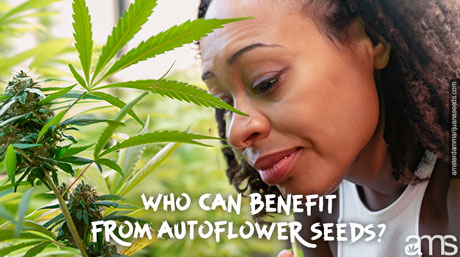
How to cultivate autoflower seeds outdoors?
- Germinate your seeds in their final growing container (ideally holding more than 10 liters).
- Position the container to receive a minimum of 8 hours of direct sunlight.
- Water your seedlings daily to ensure they remain properly hydrated.
- Feed your autoflower seeds using a slow-release approach.
- Approximately 12 weeks after germination, you should be ready to harvest your plant.
Autoflower seeds, with their sturdy nature and fast growth cycle, offer a multitude of benefits to weed cultivators. Perfect for beginners and those with limited space or resources, these resilient seeds eliminate the uncertainty out of growth light cycles, making cultivation easier and more predictable.
However, it’s essential to ensure ideal conditions for germination. Even though autoflower seeds are versatile, they still require basic care for successful germination. Soil temperature, moisture levels, and aeration greatly impact the germination success rate.
A soil temperature of around 25℃ is considered optimal for these seeds. It’s also crucial to maintain balance in soil moisture levels – the soil should be damp but not waterlogged. Overwatering can obstruct oxygen flow to the seeds, leading to stunted growth or even seed decay. Aeration plays a crucial role in successful germination. It helps in preventing mold and fostering a healthier root system for the plant.
Once these conditions are met, you can expect the seed to germinate within one to three days. The key indicator of successful germination is the emergence of a small stem sprouting from the soil surface, marking the beginning of a new growth phase.
For more detailed instructions and tips on the germination process, consider visiting this comprehensive guide. This step-by-step guide not only offers insights into successful seed germination but also discusses potential pitfalls and how to avoid them, ensuring a more successful cultivation experience.
Frequently Asked Questions
What are the benefits of growing autoflower seeds for beginners?
Autoflower seeds are a top choice for novices due to their highly adaptable nature and rapid growth. These seeds require minimal intervention and are capable of flowering autonomously, regardless of external factors like light cycles. With autoflower seeds, beginner growers can anticipate an impressive potential harvest, loaded with cannabinoid-rich buds.
Question: What are the key characteristics of autoflower seeds?
Autoflower seeds possess several distinguishing features that make them attractive to cultivators. These include a rapid life cycle, compact and discreet growth, minimal light requirements, unmatched resilience, and reduced nutrient needs. However, it’s worth noting that autoflower strains may yield less compared to feminized seed strains and are difficult to clone effectively.
Who can benefit from growing autoflower seeds?
Autoflower seeds are particularly beneficial for beginner growers and home cultivators. Their independent growth pattern allows them to thrive without specialized equipment or strictly controlled environments. The autoflowering attribute of these seeds makes them perfect for discreet cultivation both indoors and outdoors.

Top 5 Delta 9 Edibles That Actually Work and Taste Delicious

The Latest in DEA Shenanigans? The Federal Agency Punts Marijuana Hearings into 2025

Dutch police find gnome made of MDMA during drug bust

Rejected applicants sue Minnesota over marijuana social equity licensing process

4 Ways Marijuana Can Help You Have A Better Thanksgiving

Can Big Alcohol Help The Cannabis Industry

California Appeals Court Rejects Marijuana Grow Permit, Citing Federal Illegality

Expert Lighting Tips For Successful Indoor Growing Weed

Acne And CBD: Exploring Alternative Dermatological Solutions

Can I Gift Marijuana This Holiday Season?

Distressed Cannabis Business Takeaways – Canna Law Blog™

United States: Alex Malyshev And Melinda Fellner Discuss The Intersection Of Tax And Cannabis In New Video Series – Part VI: Licensing (Video)

What you Need to Know

Drug Testing for Marijuana – The Joint Blog

NCIA Write About Their Equity Scholarship Program

It has been a wild news week – here’s how CBD and weed can help you relax

Cannabis, alcohol firm SNDL loses CA$372.4 million in 2022

A new April 20 cannabis contest includes a $40,000 purse

Your Go-To Source for Cannabis Logos and Designs

UArizona launches online cannabis compliance online course
Trending
-

 Cannabis News2 years ago
Cannabis News2 years agoDistressed Cannabis Business Takeaways – Canna Law Blog™
-

 One-Hit Wonders2 years ago
One-Hit Wonders2 years agoUnited States: Alex Malyshev And Melinda Fellner Discuss The Intersection Of Tax And Cannabis In New Video Series – Part VI: Licensing (Video)
-

 Cannabis 1012 years ago
Cannabis 1012 years agoWhat you Need to Know
-

 drug testing11 months ago
drug testing11 months agoDrug Testing for Marijuana – The Joint Blog
-

 Education2 years ago
Education2 years agoNCIA Write About Their Equity Scholarship Program
-

 Cannabis2 years ago
Cannabis2 years agoIt has been a wild news week – here’s how CBD and weed can help you relax
-

 Marijuana Business Daily2 years ago
Marijuana Business Daily2 years agoCannabis, alcohol firm SNDL loses CA$372.4 million in 2022
-

 California2 years ago
California2 years agoA new April 20 cannabis contest includes a $40,000 purse



